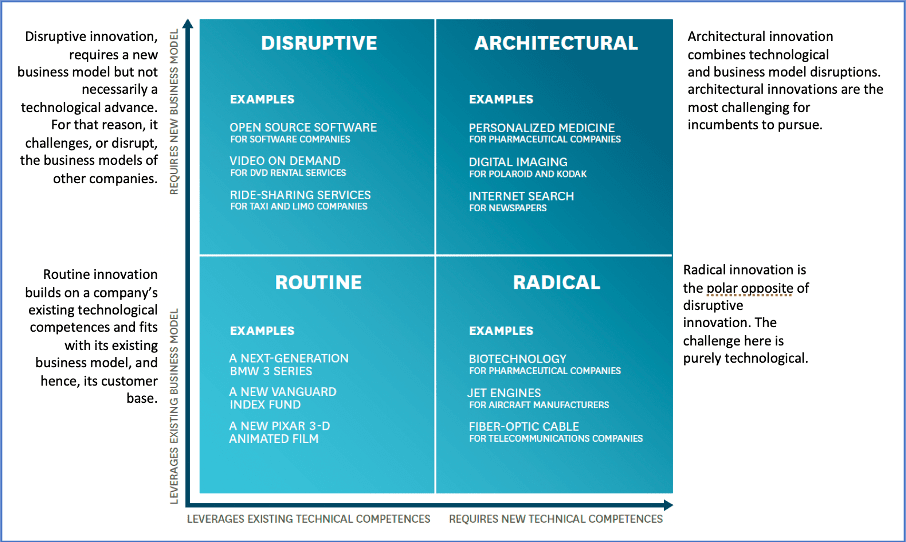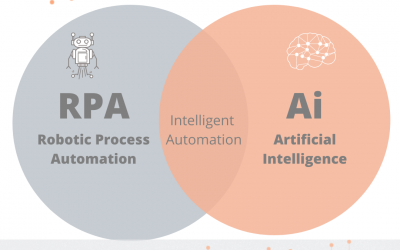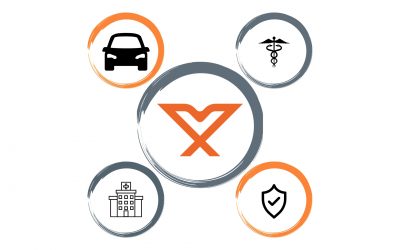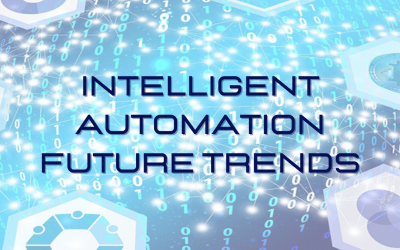My take? Yes, it is indeed: RPA is a full-fledged innovation vehicle, and here is why companies that are serious about innovation must hop on it. Now.
Since I started dealing with the RPA industry, it happened to me fairly often to talk to managers and business advisors about whether RPA is an essential technology for business innovation or not. I found out somewhat mixed opinions, often uncertain and, in some cases, very extreme, both in the decidedly affirmative sense of the RPA enthusiasts and in the spirit of those who firmly exclude that the RPA is innovation.
I know that this subject may seem a vague and academic affair. But I think it is worthy of reflection and that we have to address it, for the reason that innovation is a subject very much felt by companies, which rightly receives notable attention from top management.
In my opinion, if we can establish that RPA is an enabler of innovation, then top management must have RPA in their radars. This implies then that consistent budgets and skillful people must be assigned to RPA projects, and the coordination of these projects must be done at a higher company’s level than that of a single, enthusiast, business line or department.
Innovation Defined
Before we assess if RPA is innovation or not, I believe we need to agree on what innovation is.
Joseph A. Schumpeter, the eminent Austrian political economist, said that anyone seeking profits must innovate and that “creative destruction” is “the essence of capitalism.”
Schumpeter made a fundamental distinction between invention and innovation. Briefly, he clearly stated that discovery and execution are “two entirely different things” and that “The pure new idea is not adequate by itself to lead to implementation (…). It must be taken up by a strong character (entrepreneur) and implemented through his influence”.
According to Schumpeter, innovation is not produced by merely generating ideas but by the power of getting things done. I like this concept a lot because it defines innovation as a process that produces value (profits, in Schumpeter’s view). Without value, it is not innovation. Period.
Innovation Categorized
Now that we have established that value must be present if we talk about innovation, we face another issue: how many types of innovation can we find in business?
A company can create value through innovation in many ways. For example, it may introduce new products or services, as well as improve the performance of existing ones, their reliability and life cycle. It may improve processes to serve customers better and cheaper, and so forth.
Establishing how innovation will create value for a company and then sticking to that “how” is not at all, in my view, an academic affair. On the contrary, this is fundamental because the capabilities and resources required for each type of innovation are quite different and take time to gather and accumulate.
(By the way: sticking to that “how” implies a company has a clear innovation strategy: not a trivial argument too, but let’s leave it for another discussion…)
It is good to have a map to navigate through the varied types of innovation, so let me introduce a model, which I find very compelling, to evaluate (and choose) between types of innovation in a company. Prof. Gary P. Pisano has proposed this model in an article[1] published on Harvard Business Review, in 2015.
Prof. Pisano sustains that, when creating an innovation strategy, companies have the option to choose between:
- how much to invest in technological innovation;
- how much to invest in business model innovation.
By using those criteria as axes of a chart, a four-quadrant map can be created to help us categorize innovation:
I believe the four types of innovation that this map illustrates are clear enough to understand what follows in my reasoning. I strongly recommend reading the article from Prof. Pisano because it goes much beyond the mere categorization of innovation.
I will use this four-quadrant map to support that RPA is a technology that works two-ways:
1. RPA allows companies to rapidly implement Routine Innovation initiatives (those that bring value, as we said), and
2. RPA enables additional developments for more and broader innovation of at least one of the other three classes of innovation.
Let me use three different real cases of RPA projects, which I’m very familiar with, to sustain my case.
Case #1: Order entry through customers’ emails
Here we have a European subsidiary of a large multinational printers and scanners manufacturer that receives orders from customers through emails. A process previously managed by 26 persons is now executed by RPA robots, which can retrieve data from those emails to rightly place orders for products or services into the company’s ERP system.
According to Prof. Pisano’s categorization, this is Routine Innovation because it leverages on:
1. Existing technology: no new technology has been adopted by the company, which operates with the existing and unaltered IT systems (a great benefit of RPA), while RPA robots run “externally” on a provider infrastructure;
2. Existing business processes: the company has implemented neither organizational nor process changes. Customers operate as before at the same touch-points of the company.
With Routine Innovation, much value has been created:
- 75% reduction of people involved in the order taking process (today, these people have moved to do a more human kind of job);
- Customer service improved: faster, no errors when customers provide complete and correct information, the extension of service to 24 hours a day.
- Exception management: slightly improved (robots can signal what made them stop entering orders. Apart from this, human employees have to analyze and work out the exceptions).
This company is now moving into Radical Innovation, using the first RPA project as a foundation for the next innovation.
As a matter of fact, before the first RPA project, emails were discarded after some time. Now, all emails are logged and stored, essential data is retrieved and structured by robots to operate on them, which is the foundation of next innovation: combining RPA and AI (Cognitive-RPA) to evaluate hundreds of thousands of emails with AI algorithms.
This helps to establish the completeness of information for existing robots to correctly enter orders in their ERP system, avoiding robots to stop for lack of data and sending incomplete orders to sales reps with suggestions regarding which information is absent. In addition to that, AI algorithms are trained to discover new phenomena (e.g., customer’s buying profile and habits) and dispatch claims to proper departments, claims that could go lost if the email has all data required to be processed by an order-entry robot.

According to Prof. Pisano’s categorization, this is Radical Innovation because it requires new technical competences and assets, and it leverages the same business model, actually improving the latter a lot.
Case #2: Dispatching of Repair Orders
In this case, the company, a large multinational mobility group, had to automate, as well as improve the effectiveness, the process of assigning orders to repair damaged cars to the proper auto body-shop, which implied a significant amount of manual activity executed by a team of 6 full-time people.
The implemented RPA solution entirely automates the following processes:
- Repair requests routing;
- Updating estimates and OPs on the company’s legacy systems;
- End-to-end monitoring in near real-time and with a high level of detail (based on SLA’s and KPI’s).
Through this Routine Innovation (RPA robots run on a provider infrastructure; no organizational nor process changes have been implemented), repetitive low value-added activities have been automated, reducing operational effort and errors: currently, only 2 full-time people are dedicated to managing exceptions.
In addition to that, the amount of data generated and managed by RPA robots produces many important and measurable benefits:
- Reduction of vehicle downtime, with consequent direct benefit to the business.
- Real-time monitoring with timely intervention on process anomalies;
- Reduction of the error rate;
- Improved customer experience;
- Rapid implementation of additional business rules that can be generated with minor modifications to the RPA robots;
- Standardization of the company’s procedures;
- Enhancement of employees’ jobs: people can now focus on higher added-value activities.
The next step for this company is Radical Innovation. Shortly, a Machine Learning (AI) solution will analyze the workload at auto body-shops and instruct RPA robots to assign orders to repair cars to the proper body-shop, on the basis of its availability.
Another important improvement brought by this innovation is the assignment of orders on the basis of past performances (mainly: execution times and prices), recorded in the archive created and managed by robots. Employees will have to learn new skills and how to interact with the new technology, further enhancing the content of their jobs and the outcomes of the same business model.
Case #3: Exception and Validation Management
This case is about another large multinational, in this case a leader in the software and consultancy industry, specialized in tax, finance, and law.
Their first successful attempts to RPA regarded the automation of very menial tasks to “normalize” files received from their customers, containing data for special cases of VAT calculations, done by the software solutions of this company. These files originate from different customers and different IT sources, making a bit of a nightmare task for the professionals who were in charge of this normalization prior to the execution of calculations by their software.
Another RPA application has been implemented to convert financial statements, in some specific cases, in different formats more suitable for special types of taxations, relieving people from this very tedious and error-prone activity.
Again, we have a company starting with Routine Innovation, that RPA thoroughly supports, where repetitive low value-added activities are automated, reducing operational effort and errors.
This company has decided to move into Disruptive Innovation, using RPA as the foundation of this strategic move: they will now offer services to their customers that will be based heavily on the use of RPA, marking a passage to a brand-new business model to them that, thus far, has been purely founded on license fees.
RPA automata will execute verification processes on fiscal duties that today are performed by employees of their customers, by operating on the software packages sold by this company.
This will benefit their customers significantly, both by drastically reducing the time needed to execute these verification processes, and by making them much more reliable in terms of volume of verifications executed, much-improved data quality, and anomalies created and sent directly to accounting firms.
This is Radical Innovation in our Innovation Map because this company enters in a new competition arena, where they will offer services to customers whom they have only offered software until today. This implies a new revenue model and new processes, without acquiring new technical competencies.
Conclusions
With just these few examples of how RPA brings value by getting things done differently, collecting huge volumes of data on operations, and even enabling the adoption of new business models, my take is that the case is done: RPA is a great innovation vehicle, and what’s needed is some creativity and ingenuity to make the most out of this technology.
Any company that is seriously engaged in an innovation strategy must, in my view, adopt RPA and include this technology in its top management’s agenda.
[1] “You Need an Innovation Strategy” by Gary P. Pisano – Harvard Business Review (2015)
Articolo scritto da Giovanni Sestili, Executive Chairman di Vincix Group






Commenti recenti